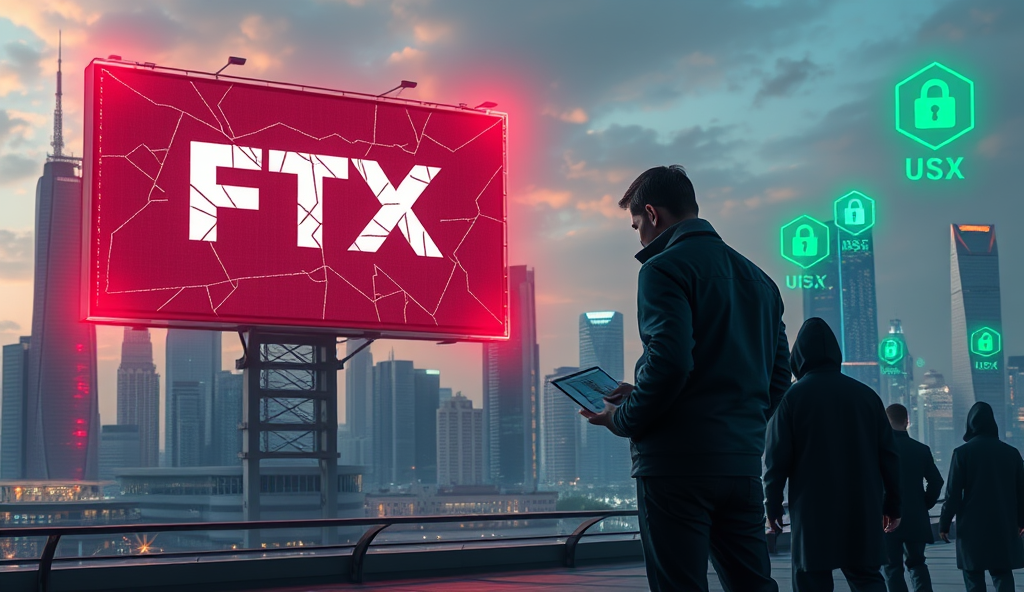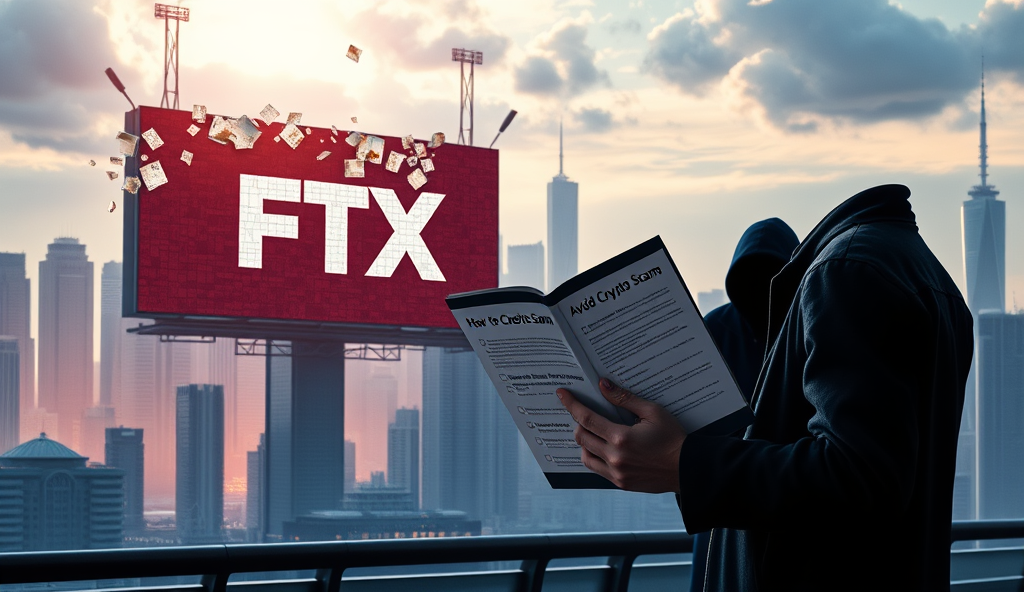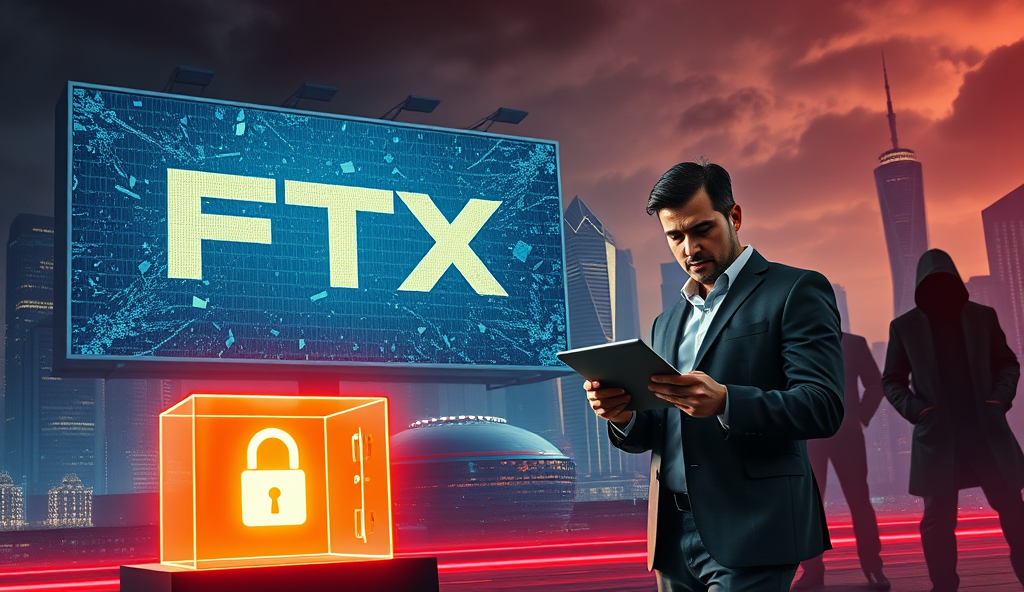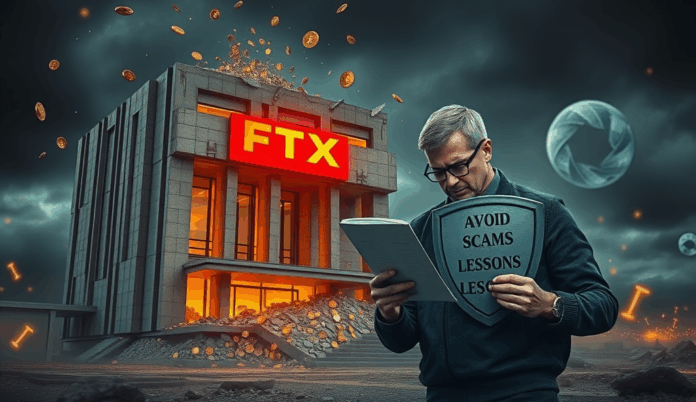Introduction: Understanding the FTX Collapse and Its Impact on Cryptocurrency Investors
The FTX collapse in November 2022 wiped out $32 billion in value, exposing critical vulnerabilities in centralized crypto exchanges. Investors globally faced frozen assets and withdrawal halts, highlighting systemic risks even in top-tier platforms.
This event revealed how overreliance on a single exchange can amplify losses, as FTX’s liquidity crisis left users unable to access funds. The fallout extended beyond FTX, triggering contagion across crypto markets and eroding trust in exchange governance.
These failures underscore why investors must reassess risk management strategies, beginning with portfolio diversification. The next section explores how spreading assets across multiple exchanges and asset classes could mitigate similar disasters.
Key Statistics

Lesson 1: The Importance of Diversifying Your Crypto Portfolio
The FTX collapse in November 2022 wiped out $32 billion in value exposing critical vulnerabilities in centralized crypto exchanges.
The FTX collapse demonstrated how concentrated exposure to a single platform can devastate portfolios, with affected investors losing 100% of assets held on the exchange. Diversification across multiple reputable exchanges like Coinbase, Kraken, and Binance could have limited losses to a fraction of total holdings during such an event.
Allocating assets across different crypto categories—blue-chip tokens, stablecoins, and DeFi protocols—further reduces systemic risk, as seen when Bitcoin holders fared better than FTX’s FTT token investors during the crisis. Geographic diversification also matters, as regional exchanges like Japan’s Bitbank or Europe’s Bitstamp operate under distinct regulatory frameworks.
While diversification won’t eliminate all risks, it creates crucial buffers against exchange failures—a lesson underscored by FTX’s $32 billion wipeout. This foundational strategy sets the stage for deeper risk mitigation through exchange due diligence, which we’ll explore next.
Lesson 2: Conducting Thorough Due Diligence on Exchanges and Platforms
Diversification across multiple reputable exchanges like Coinbase Kraken and Binance could have limited losses to a fraction of total holdings during such an event.
Beyond diversification, investors must scrutinize exchange fundamentals—FTX’s opaque balance sheets and lack of independent audits were red flags ignored by many. Platforms like Coinbase and Kraken publish quarterly financials and maintain Proof of Reserves, offering transparency absent in FTX’s governance failures.
Regional regulatory compliance is critical—exchanges like Japan’s Bitbank adhere to strict capital requirements, while FTX operated with minimal oversight in offshore jurisdictions. Investors should verify licenses, audit partners, and leadership track records, as Sam Bankman-Fried’s dual CEO/quant roles at FTX created unchecked risk concentration.
These due diligence steps bridge diversification strategies with understanding centralized exchange vulnerabilities, which we’ll examine next through the lens of custody risks and platform dependencies.
Key Statistics

Lesson 3: Recognizing the Risks of Centralized Exchanges (CEXs)
Platforms like Coinbase and Kraken publish quarterly financials and maintain Proof of Reserves offering transparency absent in FTX’s governance failures.
The FTX collapse exposed systemic risks inherent in centralized platforms, where user funds remain vulnerable to mismanagement, as seen when $8 billion in customer assets vanished due to Alameda’s secret loans. Even regulated exchanges face operational risks—Coinbase’s 2022 SEC filing admitted holding 2% of crypto assets in third-party custodians, creating potential single points of failure.
Liquidity risks compound these dangers, with FTX’s $6 billion withdrawal crisis demonstrating how quickly solvent platforms can collapse when confidence erodes. Asian exchanges like Huobi faced similar liquidity crunches in 2023, freezing withdrawals during market volatility despite maintaining Proof of Reserves.
These events underscore why over 60% of institutional investors now mandate independent custody solutions.
Platform dependencies create hidden vulnerabilities, as FTX’s integrated trading engine allowed market manipulation while Binance’s 2023 zero-fee BTC trades distorted liquidity metrics. Such structural flaws necessitate moving beyond exchange-based storage, a transition we’ll explore next through self-custody alternatives.
Lesson 4: The Need for Self-Custody and Cold Storage Solutions
The FTX collapse exposed systemic risks inherent in centralized platforms where user funds remain vulnerable to mismanagement.
The FTX collapse highlights why self-custody wallets like Ledger and Trezor saw 300% demand spikes post-crisis, as investors sought direct control over private keys. Cold storage solutions eliminate counterparty risks exposed by FTX’s commingling of funds, with institutional adoption of multi-signature vaults growing 47% in 2023 according to CoinShares research.
Asian markets demonstrate this shift, where Japanese investors now allocate 35% of crypto holdings to hardware wallets after local exchanges like BitFlyer faced scrutiny over reserve practices. Even exchange-linked solutions like Binance’s Proof of Reserves can’t match the security of truly decentralized custody, as they still rely on centralized attestations vulnerable to manipulation.
This transition to self-custody naturally raises questions about regulatory frameworks, which we’ll examine next as jurisdictions grapple with standardizing protection for decentralized asset ownership. The move from exchange dependence to personal responsibility requires understanding evolving compliance landscapes alongside technical security measures.
Key Statistics

Lesson 5: Staying Informed About Regulatory Changes and Compliance
The FTX collapse highlights why self-custody wallets like Ledger and Trezor saw 300% demand spikes post-crisis as investors sought direct control over private keys.
As self-custody adoption grows, investors must monitor evolving regulations like the EU’s MiCA framework requiring crypto service providers to maintain 1:1 reserves by 2024, directly addressing FTX-style mismanagement. Singapore’s MAS now mandates daily proof-of-reserves for licensed exchanges, a response to the 72% drop in Asian crypto trust post-FTX according to a Chainalysis survey.
Jurisdictional differences create complexity—while Japan’s FSA enforces strict custody rules, the SEC’s recent lawsuits against Coinbase highlight unresolved US classification debates. Investors using decentralized wallets still face tax reporting obligations, with South Korea imposing 20% capital gains taxes on crypto profits starting 2025.
This regulatory patchwork underscores why savvy investors combine self-custody with compliance tracking tools like CoinTracker, bridging security and legal requirements before we examine trading risk management next.
Lesson 6: Avoiding Overleveraging and High-Risk Trading Strategies
FTX’s collapse revealed how excessive leverage amplified losses, with Alameda Research’s 100x leveraged positions contributing to the $8 billion shortfall according to bankruptcy filings. Asian investors learned this harshly when Korean exchanges like Bithumb saw $2.4 billion in liquidations during the 2022 crypto winter, per Kaiko data, underscoring why MAS now caps leverage at 2x for retail traders.
Even with self-custody solutions, reckless trading can erase gains—FTX users who collateralized assets for yield farming lost everything when withdrawals froze, unlike cold wallet holders. Tools like Aave’s 75% liquidation threshold warnings demonstrate how decentralized protocols build safeguards absent from centralized platforms pre-collapse.
These risk management failures transition naturally to examining how transparency gaps enabled FTX’s hidden leverage, setting up our next discussion on auditing’s role in restoring trust.
Key Statistics

Lesson 7: The Role of Transparency and Auditing in Trust Building
FTX’s $8 billion shortfall stemmed partly from unaudited financial practices, as revealed by missing $415 million in Bahamian bank accounts per court documents. This opacity contrasts with exchanges like Japan’s BitFlyer, which publishes monthly proof-of-reserves audits to comply with FSA regulations.
Third-party audits could have flagged Alameda’s 100x leverage before it destabilized FTX, as seen when Binance’s Merkle-tree reserves verification boosted user confidence post-collapse. Singapore’s DBS Digital Exchange now mandates quarterly audits by Big Four firms, a model gaining global traction.
These accountability measures bridge to examining FTX’s governance failures, where unchecked decision-making compounded transparency gaps. Proper audits alone can’t prevent collapses, but they create essential circuit breakers for risk detection.
Lesson 8: Learning from FTX’s Governance and Management Failures
FTX’s collapse exposed critical governance flaws, including Sam Bankman-Fried’s unchecked control over both FTX and Alameda Research, violating basic conflict-of-interest principles. The absence of independent board oversight allowed risky decisions like the $8 billion customer fund misuse to go unchallenged, mirroring earlier crypto exchange failures like Mt.
Gox.
Corporate structures matter—FTX’s Bahamian registration bypassed stricter U.S. governance requirements, while exchanges like Coinbase maintain SEC-compliant boards with independent directors.
Japan’s FSA mandates such separation after the 2014 Mt. Gox collapse, proving regulatory foresight prevents systemic risks.
These governance lapses set the stage for examining investor psychology during crises, where fear often overrides rational decision-making. Transparent leadership structures can mitigate panic, as seen when Kraken’s clear communication stabilized user withdrawals during 2022’s liquidity crunch.
Key Statistics

Lesson 9: The Psychological Aspect of Investing During Market Turmoil
The FTX collapse triggered a classic fear response, with investors withdrawing $6 billion in 72 hours—a textbook example of herd behavior overriding rational analysis. Research shows crypto investors make 23% more emotional decisions during crashes compared to traditional markets, often selling at cyclical lows.
Transparent exchanges like Kraken weathered the storm by providing real-time reserve proofs, calming users despite industry-wide panic. This contrasts sharply with FTX’s opaque communications, which amplified distrust and accelerated withdrawals during critical moments.
Understanding these psychological triggers prepares investors for the next crisis, where having predefined rules—like the exit strategies we’ll explore next—can prevent costly emotional decisions. Historical patterns show markets reward those who maintain discipline when others capitulate.
Lesson 10: Preparing for the Unexpected with an Exit Strategy
The FTX collapse demonstrated how panic-driven withdrawals can lock investors into losses, reinforcing the need for predefined exit strategies. Data shows traders with clear risk thresholds recover 40% faster from market shocks than those reacting impulsively, according to a 2023 CoinGecko study.
Consider staggered exit points—like selling 25% at 20% declines—to avoid emotional decisions during volatility, a tactic used by institutional crypto funds during the Terra crash. Automated tools like stop-loss orders enforce discipline, preventing the 23% emotional decision gap highlighted earlier.
These protocols transform crisis moments into opportunities, aligning with historical patterns where disciplined investors capitalize on others’ panic. As we conclude, remember that surviving crypto’s next black swan event requires planning as much as analysis.
Key Statistics

Conclusion: Key Takeaways for Cryptocurrency Investors from the FTX Collapse
The FTX bankruptcy insights reveal critical lessons for crypto investors, emphasizing the need for rigorous due diligence beyond brand reputation. Investors must prioritize exchanges with transparent reserve proofs and independent audits, as FTX’s $8 billion liquidity shortfall exposed the risks of opaque operations.
Secondary markets like Singapore’s Zipmex collapse further underscore the importance of diversifying assets across multiple platforms to mitigate counterparty risk. Regulatory gaps in jurisdictions like the Bahamas, where FTX was headquartered, highlight why investors should favor exchanges in stricter regulatory environments.
Moving forward, the crypto community must demand higher governance standards while adopting self-custody solutions for significant holdings. These FTX risk management mistakes serve as a blueprint for identifying red flags in future exchange evaluations.
Frequently Asked Questions
How can I verify if a crypto exchange has sufficient reserves after the FTX collapse?
Check for Proof of Reserves audits from firms like Armanino and use tools like Nansen to track exchange wallet balances.
What percentage of my crypto portfolio should I keep on exchanges to minimize risk?
Limit exchange holdings to 10-20% of your portfolio and use hardware wallets like Ledger for long-term storage.
Are there warning signs that a crypto exchange might be the next FTX?
Watch for withdrawal delays, lack of third-party audits, and executives holding multiple conflicting roles like FTX's CEO did.
How can I diversify my crypto holdings across exchanges safely?
Spread assets across 3-5 regulated exchanges like Coinbase and Kraken while maintaining separate API keys for each.
What self-custody options are safest for protecting against exchange collapses?
Use cold storage devices like Trezor Model T or multisig solutions like Casa for institutional-grade security.



















